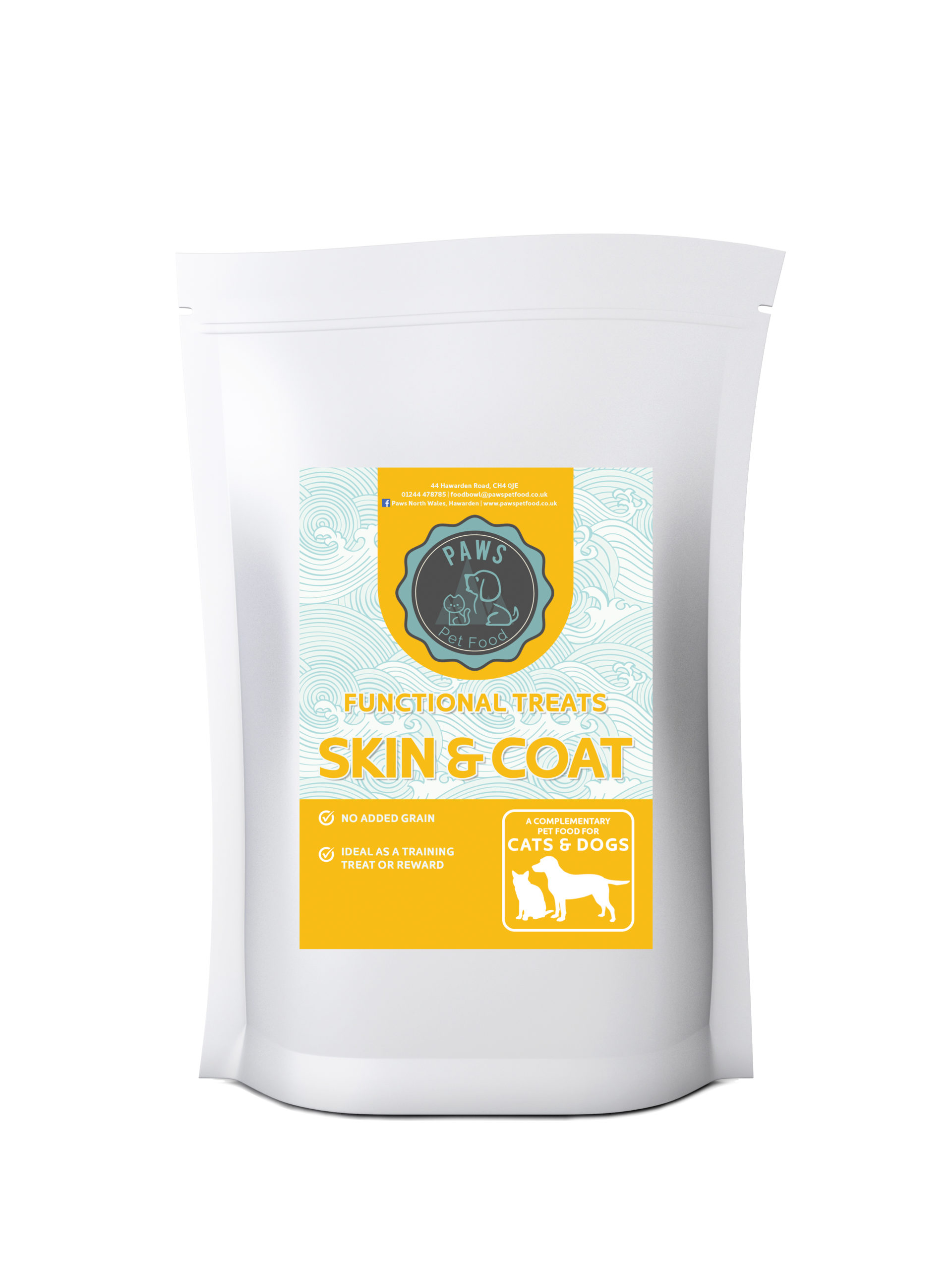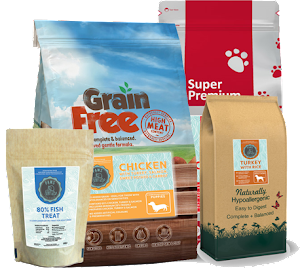
Cellulose is known as an insoluble fibre as it does not dissolve in water but it is very good at absorbing water. This water absorbing property means that a relatively low level of cellulose in pet food can help to produce well formed stools that are not too moist and loose nor too dry and hard. It can decrease gastrointestinal transit time, indicating increased motility of the digestive tract that keeps food moving along and helps with consistency of feacal volume and frequency of bowel movements.
Cellulose is composed of chains of glucose molecules joined together but dogs and cats (and humans) do not produce enzymes that can break it down and so it passes through the digestive tract pretty much unchanged. Since cellulose is neither digested nor fermented in the digestive tract of dogs and cats it is essentially calorie free and so adding cellulose can reduce the calorie content of foods which may help with weight control.
Cellulose fibre is thought to help bind the hairs that cats ingest while grooming and help them pass down the digestive tract and out in faeces rather than vomiting up hairballs. A number of studies have shown that cellulose added to cat diets increases the amount of hair in faeces and reduces the number of hairballs as well as associated symptoms such as vomiting, retching and coughing.
The addition of cellulose to extruded kibbles or chews has been shown to reduce dental plaque, calculus and gingivitis (gum inflammation). The exact mechanism is not known but is thought that the cellulose optimises the textural properties of the food providing increased elasticity and chewing time contributing to effective mechanical cleansing.
Frequently Asked Questions
Q: Where does cellulose come from?
A: Cellulose is a major part of the cell wall of plants providing strength and structure to the stalks or trunks. Cellulose can be added to pet food as either purified cellulose fibre (powdered cellulose) or as lignocellulose.
The starting raw material is typically fast growing leafed or needled trees. To create dietary lignocellulose, the wood fibre (a combination of lignin, cellulose and hemicellulose) is processed by milling to produce a very fine particle size. To obtain powdered cellulose, further processing steps are required to break down the plant structure to enable the purified cellulose to be extracted.
Q: Can dogs and cats digest cellulose?
A: No, but remember that this is not the purpose for adding cellulose in the diet of dogs and cats. It is largely added as a way to provide some bulk to the faeces and for its ability to absorb water – these properties help to keep bowel movements regular with well formed stools that are not too hard or too loose.
Although cellulose is a complex polysaccharide composed of hundreds to thousands of glucose molecules joined together (like starch), no vertebrate animals possess the necessary enzyme (cellulase) directly in their digestive tract to digest it. Some animals (e.g. cows, horses, sheep and goats) have bacteria in their digestive tract that can digest cellulose but in dogs and cats (and humans) this is not the case and so effectively it provides no calories.
Q: How does cellulose help reduce hairballs?
A: Hair that a cat has ingested during grooming can form balls which may collect in the upper part of the digestive tract and cause irritation (and eventually be regurgitated) or could collect lower down the digestive tract and potentially cause a blockage. Inclusion of cellulose fibre in the diet is thought to attach to the hair and form a network that helps move the hair down the digestive tract and pass out in the faeces.
Q: Can my dog or cat eat cellulose long term?
A: Absolutely. As with all dietary advice – it’s a matter of the right amount and the right balance. There is no problem to include cellulose as part of a nutritionally complete and balanced diet as long as the inclusion level and combination with other sources of dietary fibre are considered.
Cellulose is typically added in relatively low amounts (~0.5 – 2.0%) to the diets of dogs and cats, although for some functional benefits e.g. hairball control or ‘light’ diets levels would be higher (e.g. 4 – 10%).
Positive effects on gut health and gut microflora have been demonstrated in dogs and cats as a result of providing soluble fibre sources that can be fermented by bacteria in the digestive tract. Since cellulose is non-fermentable it would seem sensible to provide soluble fibre or prebiotic (e.g. fructooligosaccharide, FOS) to complement the cellulose inclusion.


























